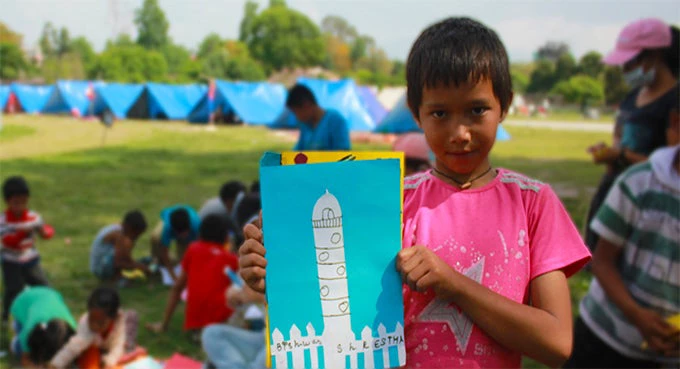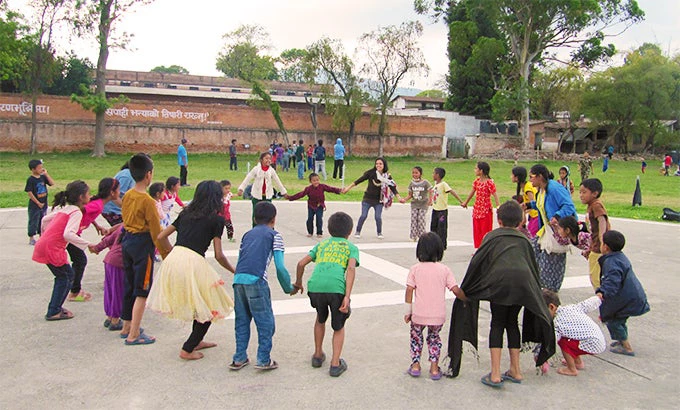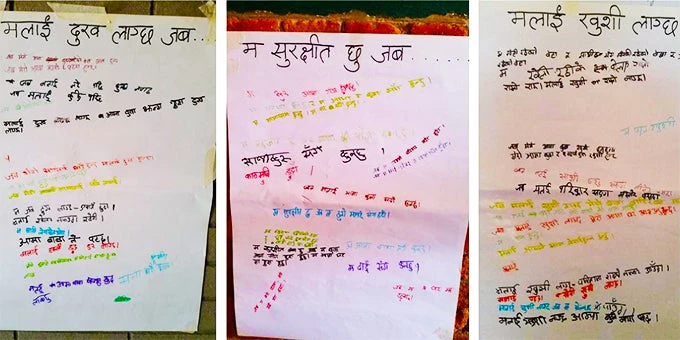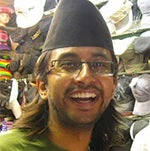
Photo - Suresh Ghimire
On April 25, the day of the earthquake, my colleagues and I were organizing the final student exhibit to mark the end of our 12-week school session. There were 12 kids and their parents when the earthquake struck. Our first instinct was to keep the kids safe; we managed to stay calm, gathered everyone into an open space and stayed strong. After the aftershocks subsided, we got news of how devastating the earthquake actually was. We immediately called our loved ones. It was a relief that everyone we knew was safe.
I am a teacher at Karkhana, an education company that designs and delivers hands-on STEAM (science, technology, engineering, arts and maths)-based content to middle school students in Nepal.
The first two days after the quake, we quickly realized that people without any specialized skills such as first aid, sanitation, nursing, construction, and rescue were not of much help in the immediate relief efforts.
The only way to contribute was to do what we are already good at - teach.

the start of the day's session. Photo - Dipeshwor Shrestha
Following a crisis, school leaders and teachers are anxious about what to do when students come back to school. How will teachers work with their students, who may be dealing with the loss of home or family? Will they be able to answer their questions? Will the children be interested in their studies, and will they be able to focus in the classrooms? What are the essential steps that institutions working with vulnerable populations should take? How does one address the trauma that teachers and students may carry into the classroom before regular lessons resume?
On the 3rd day after the quake, I met with my fellow teachers and we created a simple lesson plan and went to two temporary camps in Uttar Dhoka and in Kumari hall. In Uttar Dhoka, after gathering 50 kids, I knew that I had to discard the lesson plan and instead focus on engaging the kids. I was in charge of a group of twelve 8-13 year-old kids. I started with some energizers and then moved on to teaching some maths tricks.
Shankar, a 12 year-old math whiz, picked up the binary calculation really fast and went on to explain it to his younger classmates.
I then tried out a collage-making activity. It was obvious that Biswash was the artist in the group and I was impressed by the level of details in his artwork. Seeing the smiles on the kids’ faces, made me realize that it was worth coming back the next day.
H elping children cope in the aftermath of the earthquake
Over the next few days we talked to psychologists, educators and teachers about how we could help the kids cope with quake-related trauma, and together, we researched and designed a relevant post-quake lesson plan.
On the second week after the quake, I ran a post-quake session with some of the children. The activity was helpful to the kids because they could share their feelings in response to my prompts: I feel sad when..., I feel scared when..., I feel happy when... and I feel safe when...
Most of the kids mentioned that being with their family or friends made them feel safe, a sentiment which I believe is true for all of us.

during the Window Activity. Photo - Dipeshwor Shrestha
We trained teachers and educators on how to help their students cope with quake-related trauma. Here are my 3 takeaways:
- It starts with you: The teachers themselves need to relieve themselves from psychological trauma before they can help the kids to cope with their own feelings.
- Many education professionals are willing to help: There are a lot of experienced educators, teachers, psychologists, and trainers who are willing to work voluntarily on designing a post-quake lesson plan.
- Document and share your activities online: It’s important to have everything documented online so that multiple people can benefit, share, and contribute to the activities.
Today, our extended team is ready to train 2,400 teachers from Kathmandu , Lalitpur, Bhaktapur and Kavre on post-quake student-centered learning. Our work will benefit about 60,000 kids.
As much as this earthquake is a tragedy, it is also an opportunity for us to promote student-centered teaching that values the emotional well-being of our students and help them grow stronger and more confident.


Join the Conversation